When the St Petersburg Ballet Theatre arrives in Dublin for the first time in more than a decade, it could be seen as another line-up of Russian dancers performing the quintessential Swan Lake. Each year Irish audiences flock to sold-out shows of this classic, which premiered in Russia more than 125 years ago and remains a central part of the ballet canon.
But just as Swan Lake survived a lacklustre reception at its initial premiere, full-length classical ballets have endured more than a century of societal change. From surviving the Russian Revolution to standing up to today’s touch-screen culture, these fanciful tales still manage to capture audiences’ imaginations.
So it comes as little surprise that St Petersburg Ballet Theatre's director, Konstantin Tachkin, and prima ballerina, Irina Kolesnikova, remain devoted to, if not a little protective of, such Russian gems. Each year the company gives more than 200 performances of full-length ballets worldwide, 80 percent of which are performances of Swan Lake.
Arguably the most beloved of the Tchaikovsky ballets, and undoubtedly offering a showcase for Kolesnikova’s star power, Swan Lake is only one of the Russian ballets in the company’s repertoire, which includes, among others, La Bayadère, Don Quixote and The Nutcracker. Despite such pride in the art form’s Russian heritage, aren’t the pair ever tempted to throw in some Twyla Tharp?
"The box office dictates, and our experience tells us, the classics are classics," Tachkin says before a show in Oslo, prior to arriving in Dublin. "Of course it's good if you have in the repertoire not only classics, but we prefer them. And it's the box office. We have no choice."
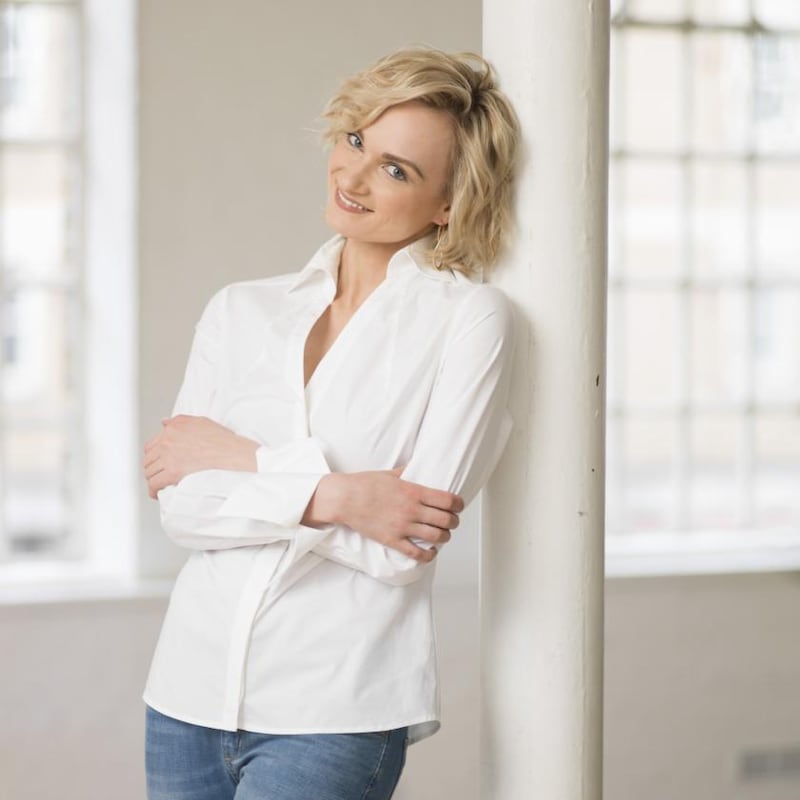
Kolesnikova floats to the table like a visage from one of her dances. She is wrapped in caramel-coloured cashmere and perches on her chair as if she might at any moment decide to take flight. Speaking mostly in Russian while Tachkin translates, she says as much with her eyes and hand gestures as she does with her words.
Kolesnikova began training at the prestigious Vaganova Academy in St Petersburg when she was 10 years old. Unlike other fabled dancers, such as Rudolf Nureyev and Mikhail Baryshnikov, who also graduated from that school, Kolesnikova's experience proved relatively straightforward, gaining acceptance on her second audition and living at home with her parents and brother while she trained for 10 hours a day. She worked with the teachers and coaches there until she graduated, in 1998, after which she joined St Petersburg Ballet Theatre.
Since then she has travelled the world with the company, sometimes dancing as many as five full-length ballets in four days. Her name headlines every performance, which would put pressure on any dancer, but Kolesnikova seems to have developed the ability to work the most gruelling schedule in the way her predecessors did.
Selling out theatres around the world is nothing new for Russian ballet companies; the Bolshoi's first visit to London, in 1956, prompted ticket buyers to queue for up to three days and nights for a coveted seat. Nureyev's performances with the Bolshoi in London and Paris in 1961 also drew immense crowds (and his noteworthy defection), as did performances by the Kirov Ballet in London and the United States later on in 1970.
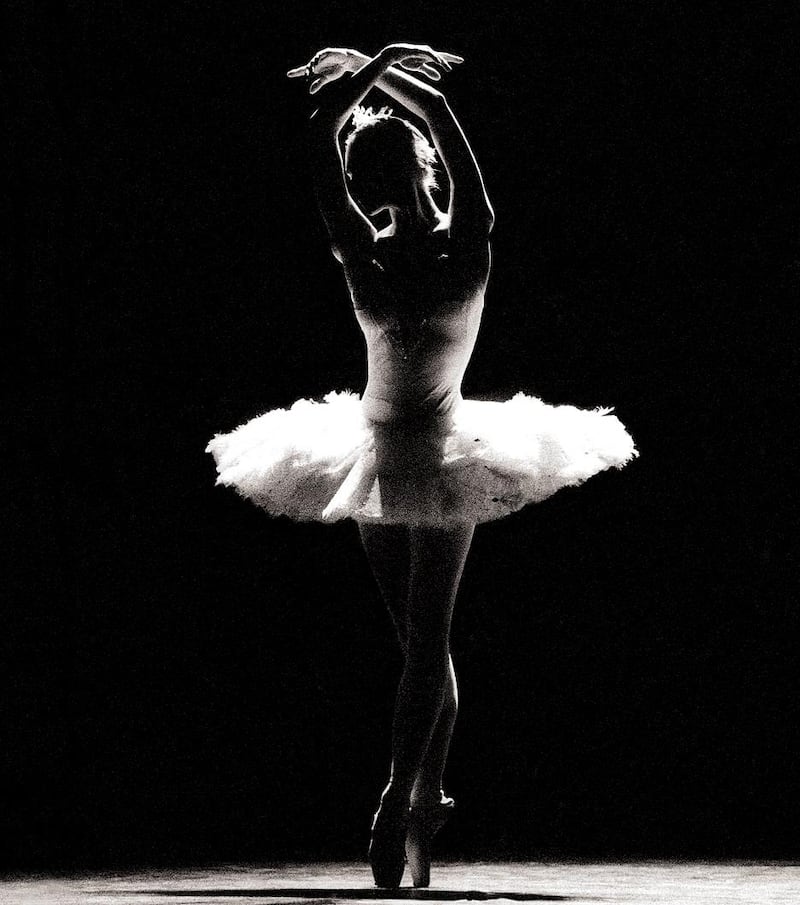
For decades Russian ballet dancers have been used as cultural calling cards, sometimes becoming unwitting pawns in such cultural exchanges, such as in 1956, when the famed Maya Plisetskaya was prevented from travelling with the Bolshoi to London.
Officials in Moscow prevented Plisetskaya from touring and then offered London fans no explanation. This broke a diplomatic agreement that had promised Plisetskaya would appear, and disappointed the more than 50,000 ticket buyers who had counted on seeing her.
It also meant that a principal dancer, Galina Ulanova, had not only to perform her own scheduled shows but also to take over many of Plisetskaya's, which resulted in an intensely demanding schedule and, ultimately, a muscular injury for Ulanova. Once she arrived back home, her injury was seen by those in power as proof of her dedication to the cause.
Since glasnost and the cold war’s thaw, Russian dancers have crossed what was previously the Iron Curtain with much less drama, resulting in more open exchange but also creating a wealth of choice in Russian ballet that western audiences are unused to navigating. No longer simply having a choice between the Kirov Ballet (now called the Mariinsky) and the Bolshoi Ballet, audiences may now buy tickets to companies with names as varied as Moscow City Ballet and the Russian State Ballet and Orchestra of Siberia.
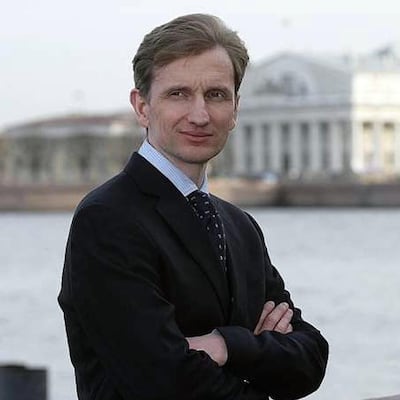
This creates no small headache for Tachkin and Kolesnikova. "Right now we have two cases in court," Tachkin says. "Other companies copy us, sometimes calling themselves St Petersburg Festival Ballet or St Petersburg State Ballet. It is confusing, because we've had this brand for 25 years and audiences think it's us. The worst case is when you see a poster of 'Swan Lake with Irina Kolesnikova', including her photos and name, saying it happened in China when we did not perform in China.
“If it’s a good company, with enough swans onstage, maybe it’s fine,” he says, laughing, “but many companies perform with maybe 12 swans or 10 swans as opposed to our 24 swans, and they have their male dancers changing the scenery during intermission. It’s horrible. And it’s not us.”
Tachkin, whose background in tourism, not ballet, prompted him to found St Petersburg Ballet Theatre in 1994, auditions and hires Russian dancers who then rehearse in a studio in St Petersburg when they are not on tour.
Watching them warm up onstage before an evening performance, it’s hard to imagine these dancers, wearing leg warmers, puff vests, torn hoodies and fuzzy slippers over their ballet shoes, transforming into swans and princes. Mobile phones and bags of shoes litter the stage, along with a healthy collection of foam rollers, which one dancer uses to stretch out her feet for the better part of an hour. Once the barre portion of the warm-up begins, their paraphernalia gets cast aside as the dancers extend their legs skyward and arch their backs into exquisite bends.
Despite the crowded onstage warm-up, there’s no sign of Kolesnikova, who prepares for shows in private. As soon as she appears as Odette it becomes clear why. Her otherworldly portrayal as the Swan Queen must require immense preparation and focus as she navigates between the spiritual and physical realms. Rather than just performing steps, she seems to coax movements through her arms and body, as if every flutter reveals a deeper layer of herself.
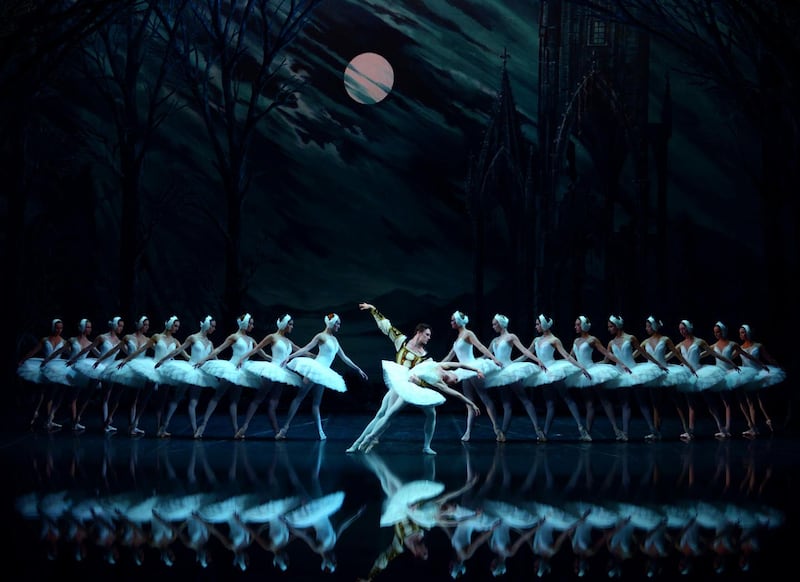
And just as easily as Kolesnikova bares her soul as the vulnerable Odette she seduces the prince as the sultry Black Swan in act III. With eyebrows raised and unexpected flicks of her wrist, she becomes the antithesis of her white-feathered being.
Certainly, Kolesnikova's artistry results from a natural gift, but it has been shaped through years of hard work and intense coaching by teachers who have instructed previous generations of Russian dancers. Ralph Fiennes accurately portrays the strictness of the Vaganova school and its coaches in his 2018 film, The White Crow, which chronicles Nureyev's dancing career.
Kolesnikova agrees that although the teaching there remains extremely disciplined, it is less strict than it was when she joined “because children today are different, it’s a different generation and the times are different”.
Her performance brings into sharp focus what critics have argued about for more than a century: the merits of Russian ballet over that of its western counterparts. Some suggest that Russian ballet’s disciplined heritage, protected from outside influences during much of the 20th century, has preserved ballet in its purest form, and therefore elevates Russian technique above those developed later.
On the other hand, proponents of ballet in Europe and the United States believe their own traditions of openness, collaboration and moving forward with the times have put their ballet styles in the lead.
Ultimately, the ticket buyers decide, and, remarkably, St Petersburg Ballet Theatre relies entirely on ticket sales for its existence, quite a rarity in the ballet world. “This year we celebrate our 25th anniversary, and we are a totally private company. We have no private sponsorship and no state money,” Tachkin says.
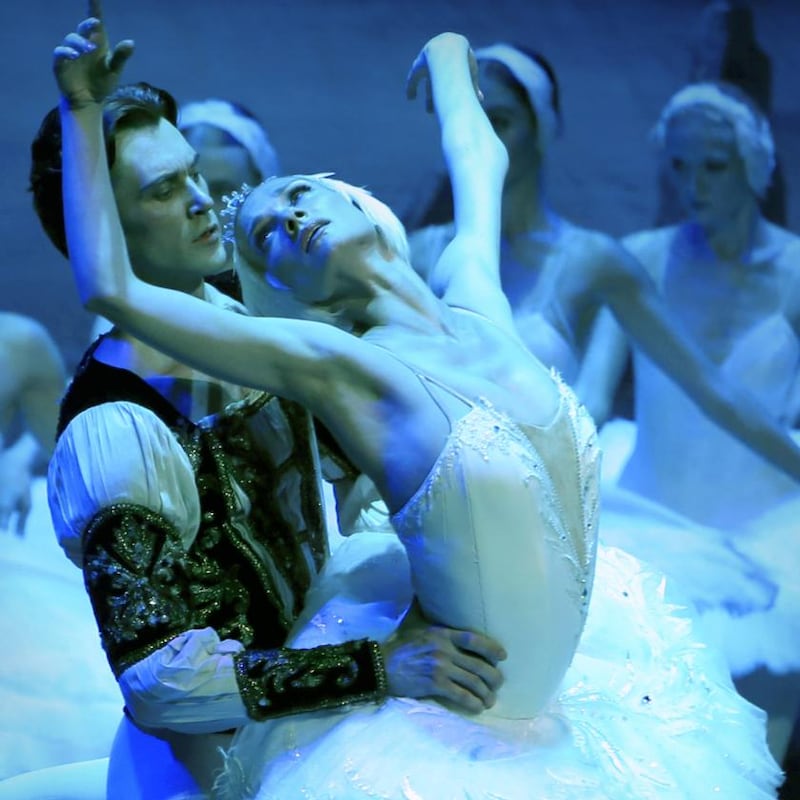
A mind-boggling number of seats therefore must be sold in order to transport more than 20 dancers along with their costumes and scenery to tour stops including, besides Dublin, the UK, Scandinavia, Taiwan, South Africa and Australia.
Tachkin books the biggest theatres he can and regularly sells out stops such as the London Coliseum and the Théâtre des Champs-Élysées, in Paris. After a particularly successful run in Paris this year, Tachkin and Kolesnikova have opted to hire a 20,000-seat stadium for the company’s stop in Paris in 2020. They are also finalising tour dates to Washington, DC, and other US cities.
Ironically, on the day of our Oslo interview, when Tachkin explains that ticket sales, not private or state money, will continue to fund St Petersburg Ballet Theatre's tours, the New York Times publishes a story lamenting Russian oligarchs' contributions to American arts organisations. The article raises concerns that donations by wealthy Russians to American arts groups cloud how Russians are viewed in the US; that instead of being scrutinised for their political and financial dealings, Russians are instead being seen through the softer lens of Tchaikovsky and Pushkin, thus blurring the lines between economics and art.
It’s a quandary that has confounded Russia’s adversaries for more than a century, but if history offers an indication, there’s good news for Swan Lake: it may yet have another 125 years of longevity.
St Petersburg Ballet Theatre with Irina Kolesnikova presents Swan Lake, accompanied by the RTÉ Concert Orchestra, at Bord Gáis Energy Theatre, Dublin, from Tuesday, October 22nd, until Saturday, October 26th















